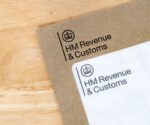State pensioners already owe tax on state pension due to little-known ‘97 rule’ | Personal Finance | Finance
Reports that state pensioners will start paying tax on their state pensions have been spreading like wildfire this week, with concerns that the triple lock is set to push the old age benefit past the Income Tax threshold for the first time. Though state pensioners have in fact always been liable to pay tax on their state pension income, from 2027 it is predicted that the state pension income alone – even for someone with no other income or earnings – will see a little bit lost to tax.
This is due to the triple lock increasing pensions each year automatically, by either the same level as inflation, wage growth or a flat 2.5%. At the same time, the Personal Allowance threshold to begin paying Income Tax has been frozen for years, and will remain stuck at its current £12,570 level until at least 2028. As a result, all pensioners, not just those with other incomes, will begin to lose some of their state pension to tax from April 2027.
But one state pensioner got in touch with the Express to outline how he has already been paying tax on his state pension, even with no other income taken into account.
This is because of a little known ‘pre-1997’ rule which gave state pensioners additional income beyond their standard basic benefit.
The pensioner contacted the Express to tell us: “My pension is £1,091 per month, so I already pay tax.”
He then provided a copy of his pension statement, which shows that, in addition to the pre-2016 basic state pension of £174.45 per month, he also has a Pre-97 additional state pension, which gives him an extra £52.52 per month, after a contracted-out deduction (COD). On top of this, he also receives a Post-97 additional state pension of £36.52, and a graduated retirement benefit of £6.96.
This means he receives £272.75 per week, or £14,183 per year. Because that’s beyond the £12,570 Personal Alllowance threshold, he owes approximately £322 a year of his state pension to HMRC in tax, or 20% of £1,613, the amount he’s over the threshold for income tax.
It’s complex, but this is because of the little known pre-97 pension and the contracted out defined benefit pension scheme that is linked to it.
This is explained by consumer magazine Which?, which says: “The additional state pension – also known as the second state pension or the state earnings-related pension scheme (Serps) – was a top-up to the basic state pension.
“You can no longer build up any additional state pension, but those who reached state pension age before April 2016 will continue to get the basic state pension and any additional state pension they are eligible for.”
As the UK Parliament website explains: “Between 1978 and 1997, contracted-out defined benefit pension schemes were required to provide a Guaranteed Minimum Pension (GMP).
“For people who reached State Pension age before 6 April 2016, the State Pension has two tiers:
“The basic State Pension is a flat-rate benefit based on their record of paying National Insurance contributions over their working life.
“The additional State Pension is based on someone’s earnings during their working life since 1978.
“People could contract-out of the additional State Pension. This meant both employers and employees paid a reduced rate of National Insurance contributions. Instead of building up their additional State Pension, the employee received a workplace pension that met certain requirements.”









